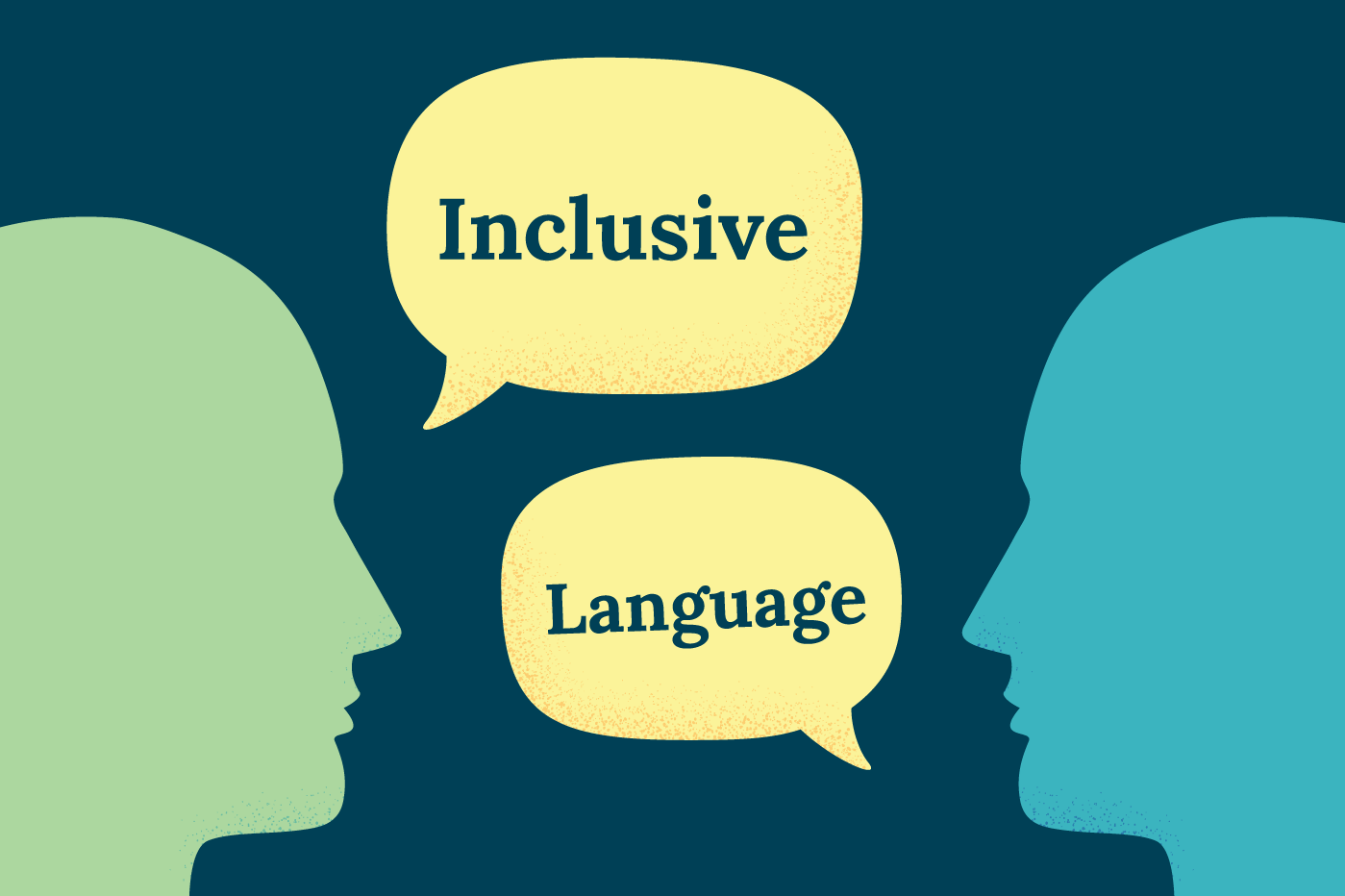Inclusive Language…It Matters
Inclusive Language is a Hot Topic but Why Does it Matter?
Language is powerful and the words we choose create expectations, boundaries and implications. To use inclusive language means proactively and intentionally using expressions, words and phrases that are welcoming. Inclusive language is important because it provides a sense of belonging while honoring identities that are usually minimized or devalued. To maximize our ability to use inclusive language, we must develop a better understanding of our unconscious assumptions about what is considered the norm and who is present in our workplace and in our communities.
Using inclusive language at work naturally creates opportunities for leadership to promote a healthy culture while furthering the mission toward an inclusive workplace (and societal) culture. Inclusive language is nuanced and changes over time. If your team can only communicate well with members of the workforce hat share similar backgrounds, identities, and characteristics, you cannot recruit diverse talent, expand to new markets, grow your talent pipeline or lead teams in a world that is becoming increasingly more diverse.
Further, the use of inclusive language helps organizations prevent missteps with everyone…customers, clients, employees, suppliers, and job candidates.
Failing to Incorporate Inclusive Language Can Have a Negative Impact on the Bottom Line
Organizations that lack inclusive language practices have trouble attracting and recruiting top talent. The absence of inclusive language in documents such as job descriptions, job postings and interview guides will reflect poorly on the organization’s ability to attract, recruit and hire top talent. If organizations are using language that is not inclusive or might be offensive, what do you think will happen as it relates to retaining top performing employees? The cost of turnover can be costly.
As consumers become more discerning about inclusivity in their jobs and purchase decisions, leaders must become more diverse, which makes it imperative for organizations to communicate inclusively with all stakeholders and the workforce at large. Organizations stunt their market reach when they fail to use inclusive language practices. For example, studies show women control most of the discretionary spending for their household and diverse buying power is on the rise. By using language in policy, practice, and advertising that is inclusive to women, organizations can better “speak” to that segment of the consumer population.
Likewise, organizations must be careful to use proper age-appropriate language when referring to their workforce or customer base. Gen Z (mid to late 1990s as starting birth years and the early 2010s as ending birth years), has been shown to prioritize diversity due to their greater dimensions of diversity in their homes and amongst their friends. Gen Z buyers are considered cause-based buyers versus brand-based, so organizations need to prepare for this generation in the workplace and in their consumer reach, as well as in their hiring practices.
The Need for Inclusive Language Goes Far Beyond Political Correctness
The need for increased use of inclusive language is not about political correctness or being prescriptive. Indeed, it is more about learning, understanding and leaning into the humanity of communication. Workplace civility and respect is present when employees are respectful and considerate in their interactions with one another, as well as with customers, clients, and the public. What if organizations were to go deeper with civil communication and the impact of inclusive language? Civil communication naturally aligns with care, empathy and inclusion. However, some may be challenged with not wanting to offend others in the workplace or the fear of saying something wrong which could result in saying nothing at all.
Silence and lack of inclusive language perpetuates an unhealthy workplace culture. Conversely, inclusive language brings care and empathy back into the workplace, while recognizing others are human and equal. Expressions, words and phrases matter as organizations go deeper with civil communication and the impact of inclusive language. Think of it as intent being met with humanity and the right kind of response. When there is a match between intent and communication, a healthy workplace transforms, and an organization’s message can truly be received by all members of the organization (including the customer base).
How to Use Inclusive Language
To better utilize inclusive language in all facets of business, organizations should consider using the following types of examples:
- Try to be more thoughtful in the use of assumed pronouns and phrases when addressing a group. “Guys” or “Ladies” is commonly used addressing everyone in a group or audience. Instead use gender neutral terms such as team, all or everyone.
- Consider inclusive language such as “chairperson” or “chair” rather than chairman.
- Only mention characteristics like gender, sexual orientation, religion, racial group or ability when relevant to the discussion. Focus on the person and not their characteristics.
- While a significant percentage of the US population are Christian, there are many in the US and globally who are not. Assuming people practice or have a specific faith lends itself to phrasing like “Merry Christmas” or going to “church.” Replace with phrases such as happy holidays and season’s greetings.
- Race and ethnicity biased language is easier to identify. Because there are common phrases with historical roots in racism, it is best to conduct research in this area. Use phrases like marginalized person, person of color or indigenous person.
- Do not use mental health language or terms casually. For example, consider saying “my attention to detail is high” instead of “I am OCD.”
- Use universal phrases. Industry jargon and acronyms can make people feel excluded. Be mindful idioms do not translate well from country to country.
- Be thoughtful about organizational brand and imagery for both internal and external stakeholders. By learning to speak to diverse audiences, organizations can broaden their reach, expand their messages to more people and create a more sustainable and profitable business.
- Power organizational performance by encouraging DE&I, promoting a civil and respectful workplace and removing barriers of self-expression.
- Ask yourself…what specific actions can I take to foster inclusive language at every level within the organization?
Organizations may not get inclusive language right every time but intentionally and proactively doing the work will help to avoid blunders that might turn viral. No longer using bullet points about inclusivity in training presentations is enough. It is time to begin using inclusive language in all aspects of the business, both internally and externally because it is expected by most of the population. This is simply too important an issue to ignore. Inclusive Language…it matters.



